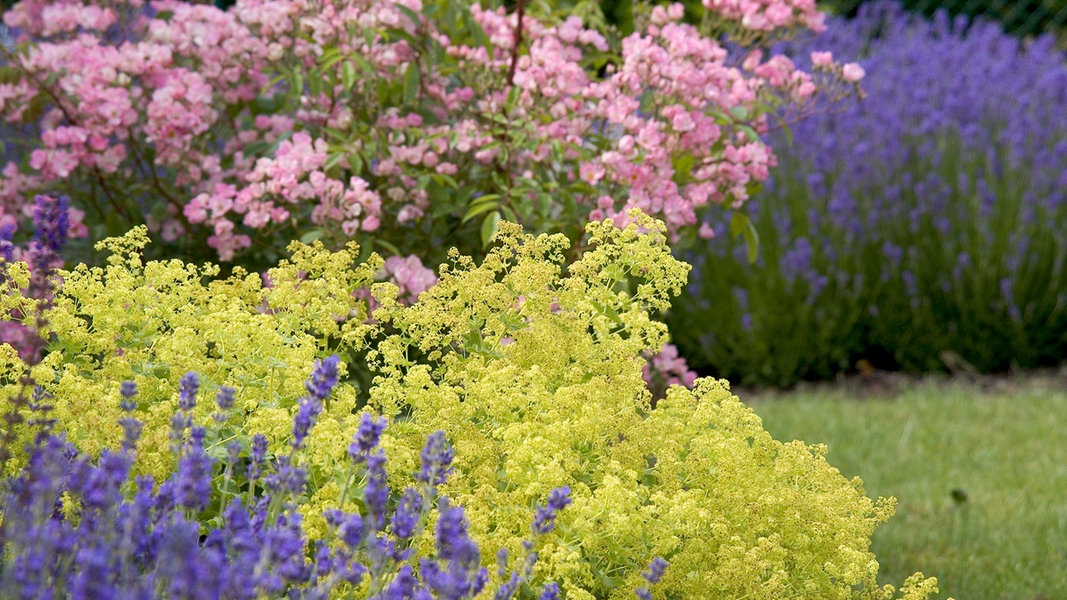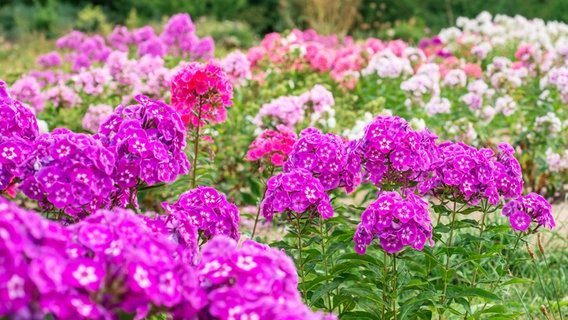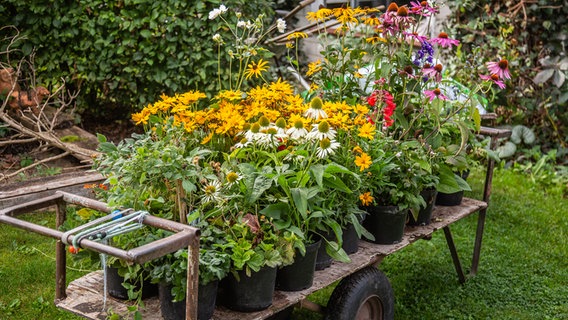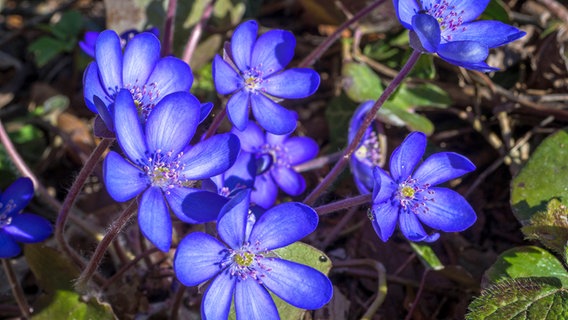As of: 03/22/2023 5:23 p.m
Beautifully flowering perennials quickly tempt you to proceed haphazardly when planting. But when creating a bed, a few things should be considered – the more beautiful the result will be.
Who doesn’t dream of a bed in which it blooms almost all year round? With the right combination of different perennials that bloom at different times of the year, this dream can come true. Anyone who decides to plant in autumn has the great advantage of being able to see the flower color and size of the plants, which makes designing easier than in spring.
Planting plan helps with the design
It is worth planning the planting, especially for larger beds. Important key questions are:
- Is the planned location more in the sun or semi-shade?
- What is the nature of the garden soil? Does it tend to become waterlogged or does it hardly store any water?
- Should a certain garden style prevail? Or a specific color or color combination?
- How much time is available for care?
Basically, the better the plants are adapted to the location and soil, the less work the bed does and the plants develop optimally. For a harmonious overall impression, it is advisable to cleverly combine lower or higher-growing plants.
When buying, pay attention to strong roots
When buying, you should pay special attention to the roots of the plants. Good quality can be recognized by strong, solid roots that touch the edge and bottom of the pot and by harmonious growth with healthy foliage. Special offers are not recommended, these plants are often “forced” to bloom with a lot of artificial fertilizer. A well-developed plant finds its way around its new location much better.
Plan the planting in peace
The perennials are best planted on a cloudy day, as strong sunlight can burn the young plants. Arrange the plants on the bed until you like the overall look. As an eye-catcher can be next Magnificent perennials also so-called solitary plants such as lilac, snowball or service pear can be planted. Annual summer flowers such as Snapdragons, marigolds and cornflowers, as well as biennials.
Check: How much space do the plants need in the bed?
There are countless types and varieties of perennials that are available for landscaping the garden. In terms of expansion, they can be divided into two categories.
Clump-forming perennials grow quite compact and spread only slightly. These include peonies, daylilies, astilbes, Funky, Larkspur and Phlox. They can be planted at the distances indicated on the plant labels and will not easily get in each other’s enclosures.
Subsequent perennials form above- or below-ground runners and so-called rhizomes. These perennials cover larger areas over time. There is a risk that they will overgrow other plants. Typical examples are classic ground covers such as waldsteinia, iris, periwinkle, lily of the valley, aster, perennial sunflower and many cranesbill varieties. The golden nettle grows particularly strong, but can overgrow unloved corners of the garden and set great accents on large areas.
As a rule of thumb, plan for around nine plants per square meter in small pots and three to four plants in large perennials (three-liter pot).
Downloads
Arrange plants correctly in the perennial bed
A well-planned perennial bed gives a harmonious overall impression.
Perennials should be spatially staggered according to height and width. These height gradations are crucial for the good appearance of the bed. First you should like the so-called scaffold perennials (lead perennials). Distribute delphiniums, ornamental onions, goat’s beard and lupins individually, in groups of two or three in the bed. It is best to plant these eye-catchers in the back part of the bed. The half-height group perennials (companion perennials) are grouped around these perennials.
At the end close the gaps with filler perennials such as cranesbill and ground covers. Even if it is difficult: For a harmonious overall picture you should limit yourself to a few types. It is best to pay attention to the different flowering times so that the bed is attractive over a long period of time. It is important that small plants are not covered by large ones. With good planning, faded flowers will disappear behind other perennials later in the year.
This is how planting works
Remove the weeds, loosen the soil well and improve with compost or potting soil – about 30 to 50 liters per square meter. Water the perennials thoroughly before planting: It is best to fill a bucket with water, put the perennial and pot in it and wait until no more air bubbles appear. Tear very tight root balls a little, this makes rooting easier. The planting hole must be about twice as deep and wide as the ball. Plant the plant as deep as it was in the pot.
After inserting, fill the edge with soil and press it down well around the perennial. Finally, water vigorously so that the soil connects to the fine roots.
Stop weeds and save water
It is recommended to cover the bed mulching reduces weed growth and retains moisture. Apply organic fertilizer such as horn shavings before mulching. Pearl or drip hoses are recommended for watering. This saves a lot of work in dry phases. In addition, such hoses water very evenly, with optimal installation you can save up to 70 percent of water.
Rampant perennials – what to do?
There are two ways to prevent perennials from growing excessively in the bed: They can be limited in growth by bed edging, concrete rings or root barriers. However, this disturbs the natural growth of the plants and they often do not develop well, flower less or become ill. The alternative is to choose a location where they can develop and spread undisturbed. However, this is often at the expense of diversity in the bed.
Further information





